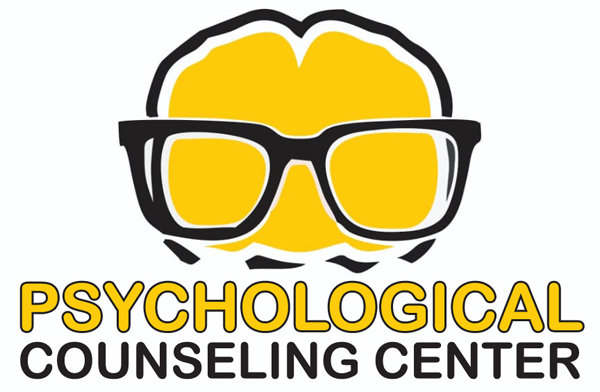1. Introduction
A toxic relationship can have devastating effects on an individual’s emotional, physical, and mental well-being.
It is a relationship where one or both parties engage in harmful behaviors that can cause long-term damage to the other person’s self-esteem and self-worth.
Emotional manipulation, physical abuse, gaslighting, and other unhealthy behaviors are common in toxic relationships.
In a romantic relationship, toxic behavior can include controlling behavior, jealousy, and verbal or physical abuse.
In a family relationship, it can be emotional manipulation or neglect. Toxic friendships can include one-sided relationships, gossip, and betrayal.
In the workplace, toxic behavior can manifest as bullying or discrimination.
It is essential to recognize the signs of a toxic relationship and take steps to protect oneself from further harm.
This can include setting boundaries, seeking support from loved ones, and in severe cases, seeking professional help or legal intervention.
Remember, a healthy relationship is built on mutual respect, trust, and communication.
If these qualities are absent, it may be time to re-evaluate the relationship and prioritize one’s well-being.
2. Signs of a toxic relationship
1. Constant criticism and belittling
Constant criticism and belittling are common signs of a toxic person. This individual will frequently point out your flaws and mistakes and make you feel like everything you do is wrong.
They may use harsh language and speak to you disrespectfully, which can lead to feelings of worthlessness and inadequacy.
A toxic person may belittle you in public or in front of others to make themselves feel superior.
They may also criticize your appearance, intelligence, or abilities, leaving you feeling insecure and self-conscious.
This behavior can be emotionally damaging and can have long-lasting effects on your self-esteem and confidence.
If you find yourself in a situation where you are constantly being criticized and belittled, it is essential to set boundaries and communicate your feelings with the toxic person.
If the behavior continues, it may be necessary to distance yourself from the relationship and seek support from friends or a mental health professional.
Remember, you deserve to be treated with respect and kindness, and it is not your fault if someone else is incapable of providing that for you.
2. Controlling behavior
Controlling behavior is a hallmark of toxic individuals who seek to manipulate others by dictating their actions and decisions.
Such individuals use various tactics to gain control, such as intimidation, coercion, and emotional manipulation.
They may use threats, guilt trips, or ultimatums to achieve their desired outcomes, and they often disregard the needs or wants of others in favor of their own interests.
Controlling individuals often exhibit possessive behavior and may attempt to isolate their targets from their friends and family.
They may also insist on monitoring or tracking their partner’s activities and may become enraged if their partner fails to comply.
This behavior can be emotionally draining and can make it difficult for individuals to maintain a sense of independence and autonomy.
It is important to recognize and address controlling behavior in relationships, as it can have severe negative consequences on mental health and well-being.
Healthy relationships are built on mutual trust, respect, and support, and individuals should never feel as though their partner is attempting to control or manipulate them.
By setting boundaries, communicating effectively, and seeking support from loved ones, individuals can break free from toxic relationships and reclaim their sense of agency and independence.
3. Gaslighting and manipulation
Manipulation and gaslighting are common tactics employed by toxic individuals to gain control over their victims.
Gaslighting involves a systematic effort to undermine an individual’s sense of reality by denying their experiences or manipulating their memories.
This type of behavior is intended to make the victim question their own sanity and doubt their perceptions, ultimately making them easier to control.
Manipulative individuals often use gaslighting to maintain power and control over their targets.
They may deny events that took place, claim that things were said or done differently, or use other tactics to make the victim feel confused or disoriented.
This behavior can cause long-lasting psychological damage and can lead to feelings of self-doubt, anxiety, and depression.
It is essential to recognize and address manipulative behavior in relationships to maintain a healthy and positive connection.
Victims of gaslighting and manipulation should seek support from loved ones and consider professional counseling to help them overcome the trauma associated with these experiences.
Additionally, individuals should practice self-care and work to establish healthy boundaries with toxic individuals to protect themselves from further emotional harm.
Ultimately, breaking free from manipulative relationships can help individuals regain their sense of self and move towards a happier, healthier future.
4. Physical or emotional abuse

Toxic individuals may use physical violence or emotional abuse as a means of control over their partners in relationships.
Physical abuse involves any form of bodily harm or injury, including hitting, punching, kicking, or any other violent act.
Such behavior is intended to intimidate and control the victim, often leading to fear and feelings of helplessness.
Emotional abuse is another tactic used by toxic individuals, which can be just as damaging as physical violence.
Emotional abuse can take many forms, including verbal insults, constant criticism, humiliation, and manipulation.
This behavior can cause significant psychological damage, leading to feelings of low self-esteem, anxiety, and depression.
Victims of physical or emotional abuse must seek help to escape the toxic relationship and avoid further harm.
Support from loved ones and professional counseling can aid in the healing process and help individuals regain their sense of self-worth and independence.
Additionally, reporting physical abuse to law enforcement may be necessary to protect oneself and hold the abuser accountable for their actions.
In conclusion, physical or emotional abuse in a relationship is never acceptable and must be addressed immediately.
No one deserves to endure physical or emotional harm at the hands of a toxic individual, and individuals should take all necessary steps to protect themselves and seek help to escape the situation.
By recognizing and addressing the signs of abuse, individuals can regain their sense of agency and move towards a healthier, happier future.
5. Lack of trust and honesty
Trust and honesty are essential elements of healthy relationships. Unfortunately, toxic individuals often lack both of these qualities, making it challenging to establish a meaningful connection with them.
Toxic individuals may lie and deceive their partners, leading to a breakdown of trust and an erosion of the relationship.
Lack of honesty and trust can manifest in various ways, including withholding information, lying about their actions or behaviors, or breaking promises.
Such behavior can lead to feelings of betrayal and can make it difficult for the victim to trust the toxic individual in the future.
This lack of trust can lead to further conflict and can ultimately lead to the breakdown of the relationship.
Individuals must recognize and address issues of trust and honesty in their relationships to maintain a healthy and positive connection.
Communication and transparency are key to establishing trust and rebuilding a broken relationship.
Victims of deceit and dishonesty should communicate their feelings and concerns with their partner, and seek support from loved ones or professional counseling to overcome feelings of betrayal.
In conclusion, trust and honesty are essential components of healthy relationships, and individuals must take steps to address issues related to these elements.
By establishing open and honest communication, individuals can maintain trust and build stronger connection with their partner.
Conversely, ignoring issues related to trust and honesty can lead to the breakdown of the relationship and cause significant emotional harm to all involved.
6. Disrespect for boundaries
When a person exhibits toxic behavior, they frequently disregard other people’s boundaries and persist in making them feel uncomfortable.
They may frequently violate personal limits, such as touching without consent or showing up uninvited.
This behavior is often accompanied by a lack of empathy, as the individual prioritizes their own desires over the feelings and boundaries of others.
The toxic person may belittle or dismiss the other person’s boundaries, making them feel guilty for trying to enforce them.
They may also use manipulation tactics to try and get the other person to give in, such as guilt-tripping or gaslighting.
These actions can cause the victim to feel powerless and confused, making it difficult for them to stand up for themselves and protect their boundaries.
Ignoring boundaries can lead to a breakdown in communication and trust, causing the relationship to deteriorate over time.
It is crucial to recognize toxic behavior and set clear boundaries to protect oneself from further harm.
7. Unequal power dynamics
A toxic person often seeks to establish an unequal power dynamic in relationships, seeking to maintain a position of superiority over others.
They may do this by belittling or diminishing others, constantly criticizing them, or by asserting their dominance through manipulation and control.
These individuals often use tactics such as gaslighting, where they make the victim doubt their own perception of reality, or stonewalling, where they refuse to engage in conversation or address the other person’s concerns.
By using these methods, the toxic person can maintain a sense of control over the other person and keep them in a position of submissiveness.
They may also use their power to limit the other person’s opportunities, such as by controlling their access to money or social connections.
By doing so, the toxic person can maintain their position of power and ensure that the other person remains dependent on them.
Being in a relationship with a toxic person can be damaging to one’s self-esteem and mental health, as it can lead to feelings of inadequacy and hopelessness.
It is important to recognize the signs of a toxic relationship and take steps to protect oneself from further harm.
This may include setting clear boundaries and seeking support from friends, family, or a mental health professional.
3. How to break free from a toxic relationship
Breaking free from a toxic relationship can be difficult, but it’s essential for your well-being. Here are some steps you can take to move on from a toxic relationship:
1. Acknowledge the toxic behavior and its impact on your life
To begin the process of healing from a toxic relationship, it is essential to first acknowledge the toxic behavior and its negative impact on your life.
This can be challenging, as the toxic person may have manipulated you into believing that their behavior is acceptable or that you are the one to blame.
However, it is important to understand that no one deserves to be treated poorly or made to feel unsafe in a relationship.
Toxic behavior can lead to a range of mental health issues, including anxiety, panic attacks, depression, constant worries, and even suicidal thoughts or tendencies.
These outcomes can be debilitating and may worsen if the situation is not resolved.
Acknowledging the toxic behavior can be a difficult and painful process, but it is a necessary step towards healing and moving forward.
This involves identifying the specific behaviors that are causing harm, such as verbal abuse, manipulation, or gaslighting, and recognizing how they are impacting your life.
It is important to validate your own feelings and experiences, even if the toxic person has convinced you that you are overreacting or that your emotions are invalid.
Seeking support from a therapist or trusted loved ones can be helpful in this process, as they can provide a safe and non-judgmental space to process your feelings and work towards healing.
Overall, acknowledging the toxic behavior and its impact on your life is the first step towards creating a healthier and happier future for yourself.
It takes courage and strength to confront the truth, but it is a necessary step toward breaking free from the cycle of toxicity and reclaiming your life.
2. Set clear boundaries and stick to them
After acknowledging the toxic behavior and its impact on your life, the next step towards healing and moving on is to set clear boundaries for yourself and communicate them to the toxic person.
This involves identifying the specific behaviors that are unacceptable and determining what you will and will not tolerate in the relationship.
It is important to communicate these boundaries clearly and assertively, using “I” statements to express your needs and feelings.
For example, “I will not tolerate being yelled at or spoken to disrespectfully” or “I need space and time to myself, and I expect you to respect that.”
It is essential to be firm and consistent in enforcing these boundaries, even if the toxic person tries to manipulate or guilt-trip you into changing them.
Sticking to these boundaries can be challenging, especially if the toxic person is used to having control over you.
It may be helpful to practice self-care techniques such as meditation, exercise, or spending time with supportive friends and family to build up your emotional resilience and reinforce your commitment to your boundaries.
Remember that setting boundaries is not about punishing or controlling the other person, but rather about protecting yourself and creating a healthier relationship dynamic.
If the toxic person continues to violate your boundaries or refuses to respect your needs, it may be necessary to end the relationship altogether in order to prioritize your own well-being.
In conclusion, setting clear boundaries and sticking to them is an essential step toward healing from a toxic relationship.
It takes courage and self-awareness to establish healthy boundaries and enforce them, but doing so can lead to a more fulfilling and positive future.
3. Seek support from friends, family, or a therapist

When dealing with the aftermath of a toxic relationship, it is important to seek support from friends, family, or a therapist.
Surrounding yourself with people who care about you can help you feel less isolated and provide a safe and supportive environment to process your emotions.
In addition to seeking support from loved ones, it may be helpful to seek professional help from a therapist.
A therapist can provide a non-judgmental space to explore your feelings, work through any trauma or emotional wounds from the toxic relationship, and develop coping mechanisms to deal with the situation.
Therapy can also help you identify any patterns or behaviors that may have contributed to the toxic relationship so that you can avoid repeating these patterns in the future.
A therapist can provide you with tools to establish healthy boundaries, improve communication skills, and build self-esteem and confidence.
It is important to remember that seeking help is not a sign of weakness, but rather a courageous and proactive step towards healing and recovery.
Whether you choose to confide in a trusted friend, seek support from family members, or consult with a therapist, reaching out for help can make a significant difference in your ability to move forward and create a happier, healthier future for yourself.
In summary, seeking support from friends, family, or a therapist is an important aspect of healing from a toxic relationship.
By surrounding yourself with a positive support system and seeking professional help if needed, you can work through your emotions, develop coping mechanisms, and establish healthier patterns for future relationships.
4. Cut off contact with the toxic person if necessary
Sometimes, despite your best efforts to set boundaries and work through the issues in the relationship, the toxic person may be unwilling or unable to change their behavior.
In cases where the situation is dangerous or causing significant harm to your mental or physical health, it may be necessary to cut off contact with the toxic person completely.
Cutting off contact can be a difficult decision, but it is often necessary for your own well-being and safety.
This may involve blocking their phone number and social media accounts, avoiding places where you might run into them, and even obtaining a restraining order if necessary.
It is important to remember that cutting off contact does not mean you are weak or that you have failed in some way.
It is a courageous and self-protective decision that allows you to prioritize your own health and safety above all else.
If you do decide to cut off contact, it is important to enlist the support of trusted friends, family members, or a therapist to help you navigate the emotional fallout of the situation.
It may also be helpful to engage in self-care practices such as meditation, exercise, or journaling to help process your feelings and emotions.
In conclusion, cutting off contact with a toxic person can be a difficult but necessary step in the healing process.
It allows you to create a safe and healthy environment for yourself, free from the negative influence and harmful behavior of the toxic person.
Remember that cutting off contact does not have to be a permanent decision.
If the toxic person is willing to take responsibility for their actions and work towards change, it may be possible to establish a healthier relationship in the future.
However, this should only be considered after significant progress has been made and your safety and well-being are not at risk.
Ultimately, the decision to cut off contact with a toxic person is a personal one that should be based on your own needs and priorities.
By taking steps to prioritize your mental and physical health, you can create a happier and more fulfilling life for yourself, free from the toxic influence of others.
5. Focus on self-care and healing









